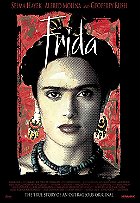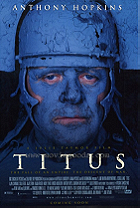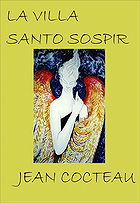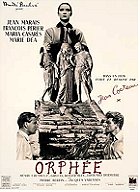When this project was originally shopped around town in the 1980s, no one in Hollywood knew much about the iconoclast artist Frida Kahlo. It was considered as a prestige project for an actress like Meryl Streep or Jessica Lange, very obvious choices for a proudly Mexican woman who wore the traditional garments of her culture. Thankfully, these versions, including ones that nearly starred Laura San Giacomo, Madonna, Marisa Tomei, and Jennifer Lopez, all failed or stalled out in development hell and we were blessed with this passionate, fiery one.
Frida was the dream project of star/producer Salma Hayek, and she spent the better part of her earliest career chasing the various film productions and trying to star in them. Eventually, through sheer determination, pluck, and smart career moves, Hayek obtained the rights to Kahlo and Diego Rivera’s paintings, got Harvey Weinstein and Miramax to purchase the rights, and chased down Alfred Molina and Julie Taymor to co-star and direct. Hayek’s love and passion for the project is palpable throughout, and she brings out strong work in all of her collaborators.
Yes, the film’s script is loaded with the problems typical to any biopic, but Frida works hard to overcome and garnish them. The film finds the direct lines of autobiography in her art, and uses Kahlo’s famous statement about never painting dreams or illusions but her own life as a way to wrestle with her work and obsessions. Even better is how vibrant and heavily present the culture, symbols, and textures of Mexico are in the film. Frida goes a long way towards adding considerable flavor to more routine moments, even transforming a few sequences into grand surrealist poetry.
Take the ways that Taymor utilizes about a dozen of Kahlo’s more famous paintings and uses them demonstrate the emotional catharsis or understanding of the artist. The harrowing sequence were Kahlo miscarries ends with her sitting up in her hospital bed, emotionally placid, and painting as a way to exorcise the pain and horror of what she’s just experienced. After marrying Diego Rivera, Hayek and Molina are posed in a manner that directly echoes her famous painting of the pair, and it functions are a moving wedding photo. These are but a handful of the strange, oneiric moments where Kahlo engages with her paintings, either by stepping directly into them or by transitioning out of them.
I previously mentioned how Frida uses the culture of Mexico in deep and meaningful ways at several points, and one of the most prominent comes very early in the film. The bus accident that leaves Kahlo scarred and crippled for life transitions into a stop-motion sequence from the Brothers Quay using Day of the Dead totems as doctors reassembling her spine. It’s a nightmare turned absolutely beautiful in the ways it positions us inside of Kahlo’s mindscape, and it uses the culture of Mexico to add vibrancy and imagination to a terrifying moment. Even better is the cameo from Chavela Vargas, one of Kahlo’s many lovers, belting out “La Llorona” over a montage of Kahlo’s final days. This is a direct connection to the artist, and turns Vargas and “La Llorona” into a siren call from approaching death.
No story about Frida Kahlo would be complete or feasible without also detailing aspects of Diego Rivera’s life. These two artists were instrumental to each other during the peak period of their artistic and political lives, acting as lovers, adversaries, champions, and kindred spirits. The potential for actors to dig deep and provide several fireworks is written into the lifeblood of the roles, but Hayek and Molina prefer to play it all real and not as entombed icons.
This was Hayek’s “role of a lifetime,” and she excels at every turn, from the bright schoolgirl to the tortured wife to the political activist to the towering artist. Hayek finds the reality in every twist and turn, and was rightly nominated for a slew of awards for her work here. Not content with just starring in and acting as a midwife to the production, Hayek even recreated some the paintings in the film. Frida was her chance to break out of the Latin sex bomb archetype that Hollywood had encased her in, and her post-Frida career is far more interesting for the artistic cachet it brought her.
Matching her every step of the way if Alfred Molina. He’s her equal in every measure here, and he creates a Diego Rivera that is by turns charming and a bastard. During her lifetime, Rivera was the well-known and prominent artist, and Molina plays him as such, but also adds tender grace notes that hint that he knew time would cause her work to eclipse his own. Think of the scene where he stares at Kahlo’s notebook after having her feet removed, and Molina’s face is one of pure love and sympathy, supportive and empathetic. Where was the love for Molina’s performance during the awards season? At least BAFTA, SAG, and a few critics groups were smart enough to throw some nominations and accolades his way.
These two provide the anchor and support of the Frida, around which a small galaxy of impressive visuals and big name guest stars orbit (OK, maybe Ashley Judd’s cameo as Tina Modotti is an odd bum note). The cinematography is possessed with bright greens, blues, and reds, the score by Elliott Goldenthal deservedly won an Oscar, and the entire production is handsome as ever. Perhaps I’m too enamored with Frida, I admit it has faults, but I simply do not care. It dives into Kahlo’s psyche and gives us many an incident and anecdote to tackle, many a glorious image to drink in, and a pair of lives rich with passion and brains to marvel at.
 Login
Login
 Home
Home 95 Lists
95 Lists 1531 Reviews
1531 Reviews Collections
Collections
 0 comments,
0 comments, 







